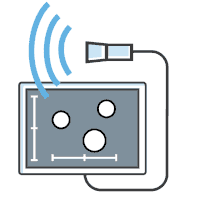Let's Make This Clear: Workers' Comp Is Not Medicare

A recent post by Joe Paduda perpetuates the common but incorrect practice of analogizing workers’ comp to Medicare. In his discussion, Paduda notes that Medicare pays much less than workers’ comp for Magnetic Resonance Imaging (MRIs). But this comparison is appropriate only on the surface. The reality of treating a workers’ comp patient entails a host of responsibilities, tasks, and enormous headaches that are absent in the Medicare context.
Comparing Medicare to workers’ comp is like comparing the price of a soda at a convenience store to that of the same soda at a five-star restaurant. The sodas are no different, but nothing else is the same.
In NCCI AIS research review – Comparing work comp to group health, Paduda cites only return to work as the main differentiator between workers’ comp and group health/Medicare. However, he misses the critical difference that speaks directly to the reason workers’ comp treatment must be reimbursed at higher rates than equivalent treatment under Medicare: namely, the much greater regulatory compliance burdens shouldered by workers’ comp providers.
Take, for example, the different steps for treatment and reimbursement under each of Medicare and workers’ comp.
Under Medicare, in most cases the primary provider and/or staff:
- Automatically determine patient Medicare eligibility.
- Treat the patient.
- Submit the bill electronically.
- Receive payment from Medicare quickly and correctly with relatively little fuss.
In contrast, under workers’ comp, the primary provider and/or staff must:
- Make multiple phone calls to determine injured worker eligibility and gather other required workers’ comp information (MPN, where to send RFAs, PTP, etc.).
- Determine where to send the bill (there are hundreds of permutations of workers’ comp payer addresses).
- Prior to treatment, request authorization for treatment and track the utilization review decision.
- Treat the patient.
- Request authorization for diagnostic tests, therapy, and pharmaceuticals, which involves documentation of following MTUS guidelines/formulary research; and subsequent forwarding of utilization review decisions to the appropriate provider.
- Complete required reports (Doctor’s First Report, PR-2, PR-4).
- Review secondary physician reporting and forward the same to claims administrators.
- Substantial case management involving, among other actions, peer-to-peer calls and letters from attorneys, phone calls from adjusters, etc.
- Submit a bill with reports and authorizations.
- In the case of denial or incomplete payment, endure a grueling series of increasingly cost-prohibitive and labor-intensive appeals processes.
Although the actual medical treatment may be the same, everything before, surrounding, and after the treatment is much more complex in workers’ comp: the number of steps, the volume and type of paperwork, and the sheer brutal hassle.
Paduda’s common mistake of drawing a parallel between the costs of workers’ comp and Medicare (when in fact the amount of work and costs are widely divergent) is shared by the drafters of CA SB 537, which seeks to set a Medicare minimum for workers’ comp reimbursement. Although we applaud the motivation to curb the deep discounts inflicted on physical medicine providers by networks, the modeling of workers’ comp payment on Medicare payments just does not make sense.
To read more about our opposition to parts of SB 537:
- SB 537: Physicians Should REVOLT Against Inequities
- SB 537: Say NO to Medicare Reimbursements
- SB 537: Arbitrary Medicare Reimbursement Hurts Physicians
DaisyBill provides content as an insightful service to its readers and clients. It does not offer legal advice and cannot guarantee the accuracy or suitability of its content for a particular purpose.


.gif)
